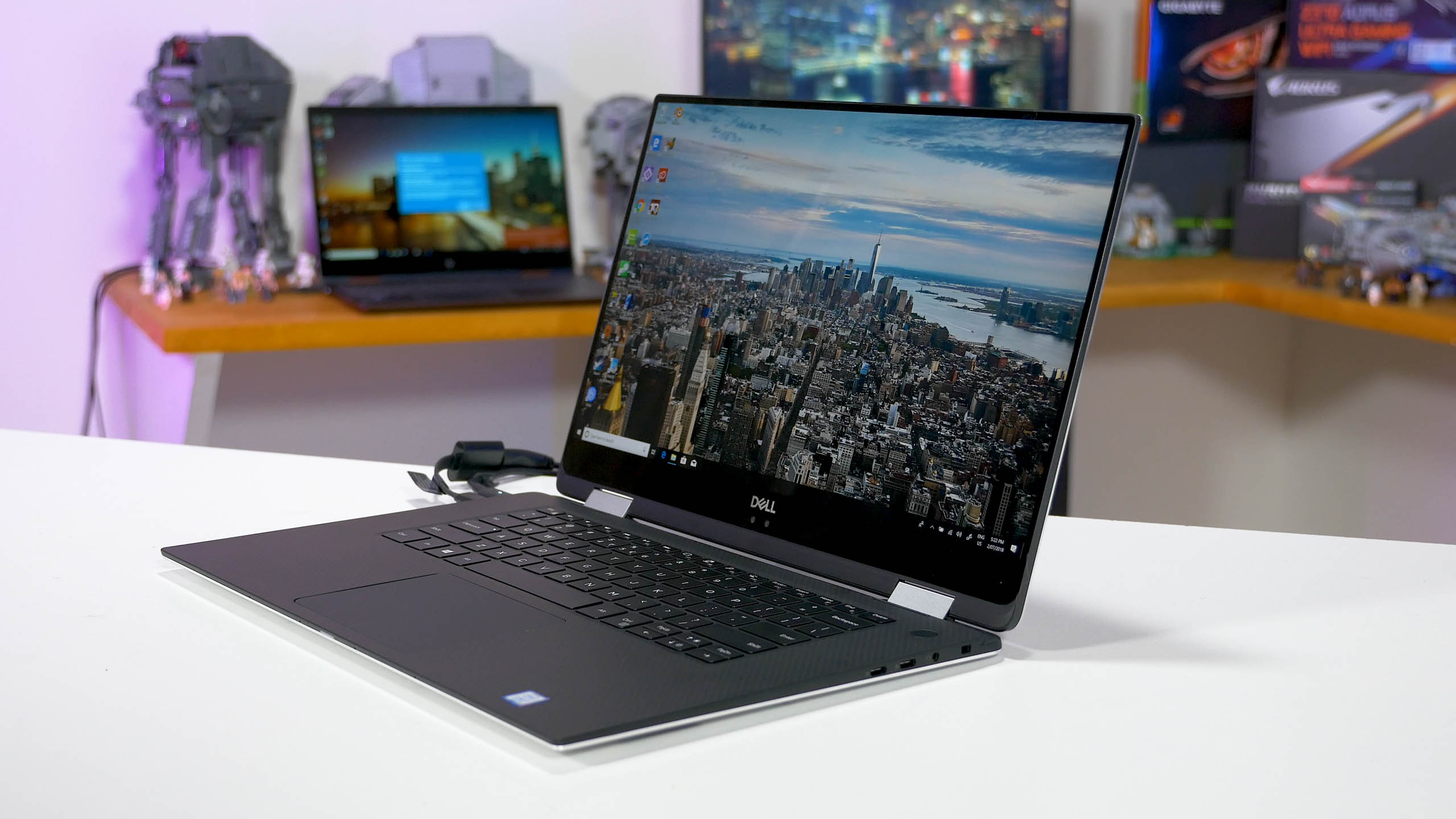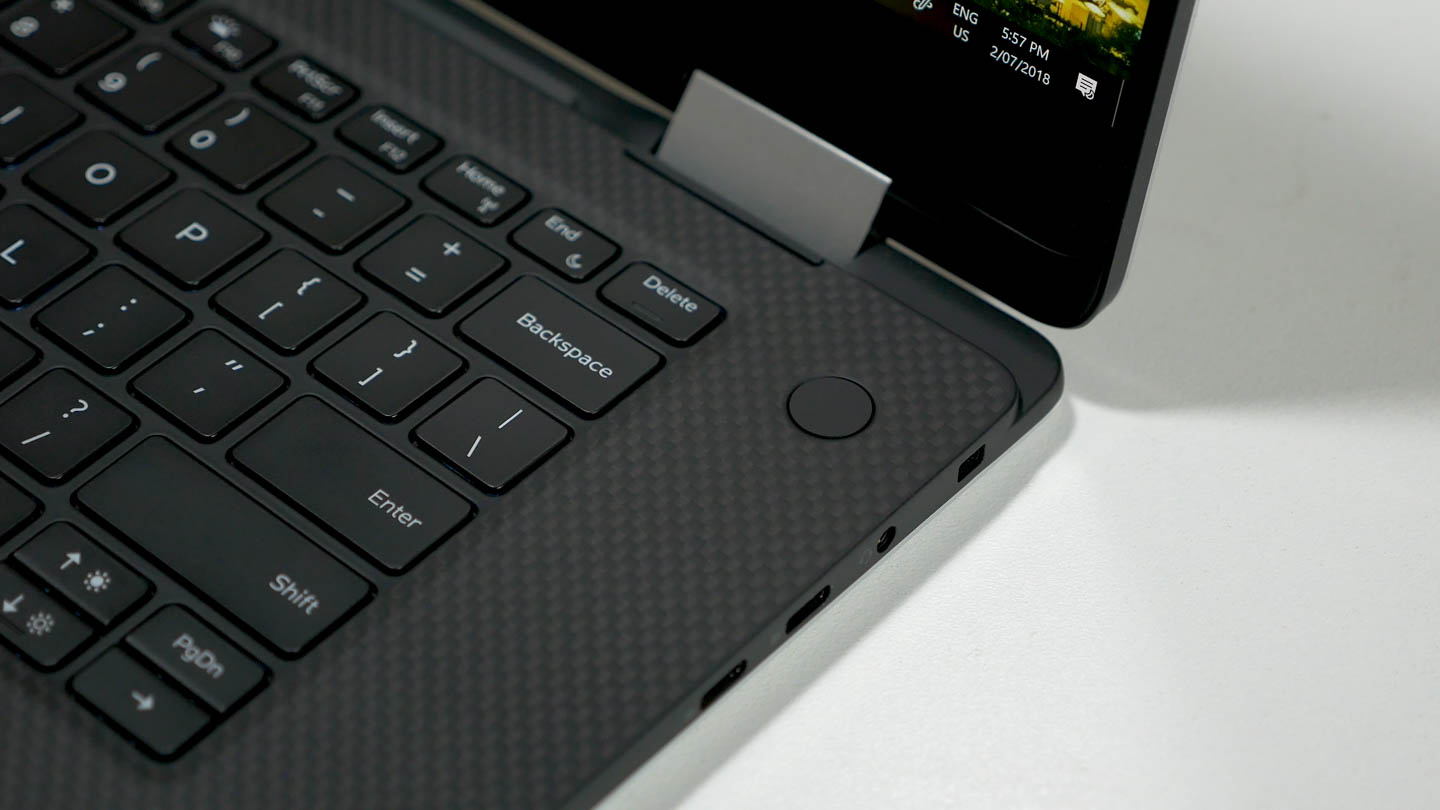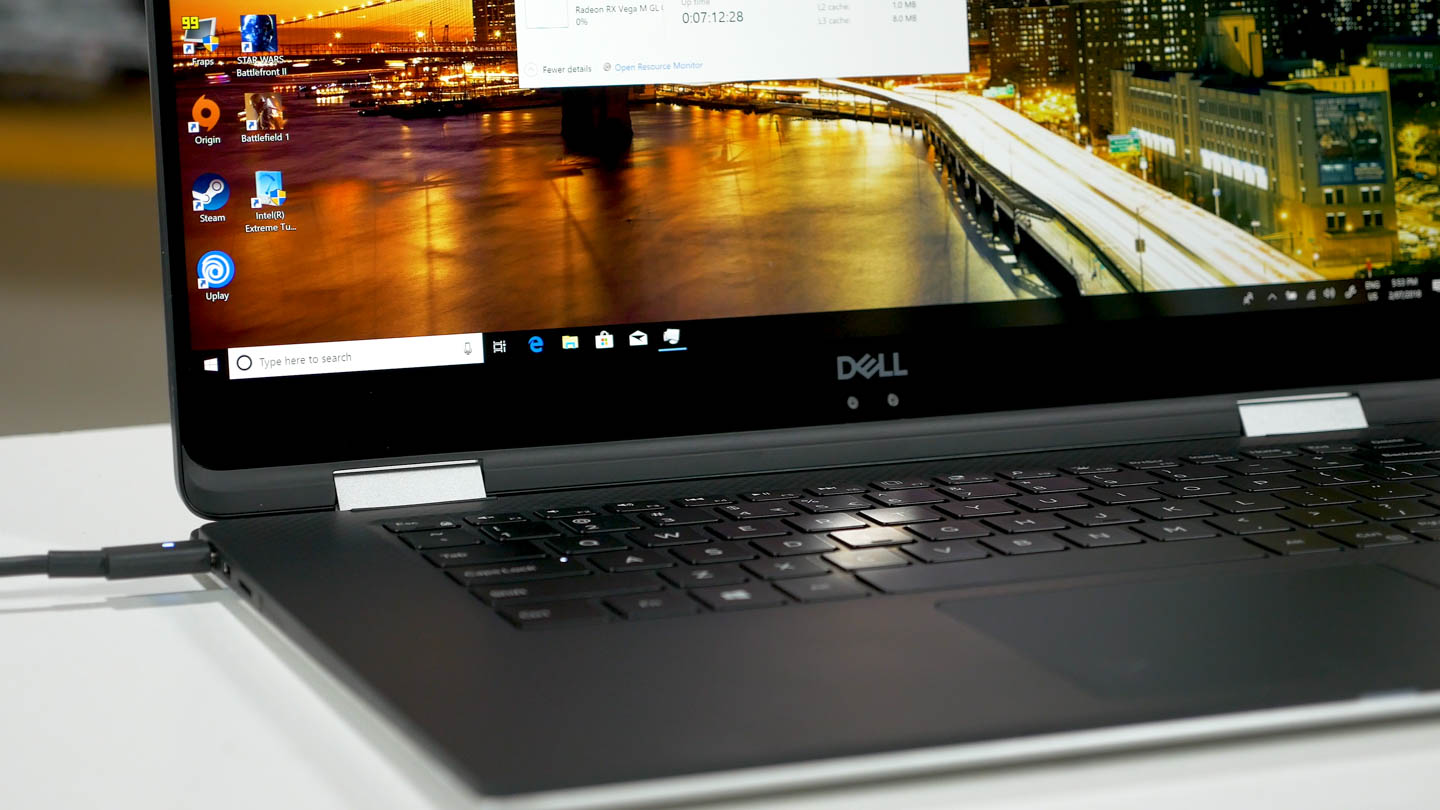When Dell brought us the first Kaby Lake-G laptop to market we were very excited to see how the combo processor would perform, that is, a combination of a quad-core Kaby Lake CPU with an AMD Radeon RX Vega M GPU and 4GB of HBM2 on a single package. We've already gone through all the performance, now let's discuss whether it's actually worth buying the first Kaby Lake-G laptop: the Dell XPS 15 2-in-1.
We're looking at a convertible laptop with a 360-degree hinge. You can use it as a giant 15.6-inch tablet, or in more useful stand and tent modes. At this size, I don't find the 2-in-1 aspect of this laptop all that useful; most convertibles I stick to using as a laptop anyway, but when we're talking about a 15-inch system, the size makes some of those other usage modes less practical.
The hinge is sturdy and easy to operate, and there are no noticeable compromises that affect the laptop experience. This is still a laptop first and other usage modes second, which is the right approach to take with this sort of device.
In terms of build quality, we're looking at the same excellent build as Dell's entire XPS line: beautiful matte metal on the lid and base, along with a soft-touch carbon fiber styled keyboard surround. It's a sturdy laptop that has a nice premium touch that you should be getting at this price point.
It wouldn't be an XPS laptop without a slim bezel display so you're getting that as well. I still think Dell does the best slim-bezel laptops out there and it's awesome to get it in not just the 13-inch form factors, but 15-inch as well. Unfortunately the trade-off for such slim bezels is the nostril-vision camera positioned below the display, which isn't great for frequent webcam users, but the slimmer bezels do allow the laptop to take up a smaller footprint.
And while not a small or particularly portable laptop purely due to its large 15-inch screen, it's one of the smallest devices you can get in its class. The thickest parts are just 16mm thick and that tapers down nicely, and overall it weighs just 2 kg (4.4 lbs). Ideally I'd like to see that weight come down a tad, but you are getting a 75 Wh battery inside along with the premium aluminum construction and both of those things add to the weight.
The port selection is pretty lacking on the XPS 15 2-in-1, especially compared to the non-convertible XPS 15. There isn't a single USB-A port on this device; Dell has instead opted for two Thunderbolt 3 ports on the left and two USB-C 3.1 ports on the right. The USB-C 3.1 ports double as DisplayPort outputs but there is no commonly-used display connector on this device, and while dual Thunderbolt 3 is nice, the lack of USB-A is annoying if you want to use many common peripherals without a dongle. As the market transitions to USB-C, it's still crucial to include at least one USB-A port and while the sides are quite thin, I think a slight design revision would have allowed full-size USB here.
You also get a 3.5mm headphone jack and a microSD card slot, again it would make more sense to have a full SD slot here especially as the laptop is designed for creative professionals. Both a full SD slot and USB-A ports are included with the regular Dell XPS 15.
The keyboard uses Dell's shallower XPS key design, used across their 2-in-1 laptops, which provides slightly less feedback than the deeper keys with a longer travel on the non-convertible XPSes. The keyboard is fine, but it's not particularly satisfying to type on and I definitely prefer the standard XPS keyboard over this one. It's also a bit disappointing this 15-inch laptop does not include a numpad but that does allow the main keyboard to take center stage.
The trackpad is good, on par with Dell's other XPS laptops, and I like the inclusion of a fingerprint reader in the power button. The camera array also supports Windows Hello facial recognition if you'd prefer that for authentication.
The display is available in either 1080p or 4K resolutions; both are 15.6-inch IPS LCD panels, and both include touchscreens. I received the 4K model to review, and it packs 100% Adobe RGB gamut coverage so it's perfect for content creators that need the extra color space.
In typical Dell fashion, this is a professional grade display that includes features designed for creators. Their PremierColor utility allows you to choose between several display modes, including a 'vibrant' mode with proper color management that allows you to get the most out of your display, along with additional modes that can clamp the screen to DCI-P3, sRGB or Adobe RGB depending on your needs. This is super handy if you're using an app that doesn't handle color management well, yet you require those larger gamuts.
The 4K display performs well, with brightness above 400 nits, a strong contrast ratio of 1660:1, and average deltaEs around the 3.0 mark in the default mode when measuring against sRGB. That can be tightened further by selecting a specific mode, and both the DCI-P3 and Adobe RGB modes provide near-full coverage of those respective gamuts.
Performance is something we've covered in detail in another article, so I'd highly recommend checking out my review of Kaby Lake G for a full breakdown of how this exact model performs. But I will summarize my findings here briefly for those that just want a quick overview.
The latest Dell XPS 15 2-in-1 9575 comes with an Intel Core i7-8705G in the upper end models, or an i5-8305G in the lower models, both of which are 65W Kaby Lake G parts with a quad-core CPU and a 20 compute unit Vega GPU. My review unit as configured came with 16GB of DDR4-2400 memory, although 8GB appears to be the standard across most models. That said, like with a lot of Dell systems you have the option to configure both storage and memory through their website.


CPU performance is good, slightly outperforming the last-gen Core i7-7700HQ though falling short of the newer six-core Coffee Lake laptop CPUs like the Core i7-8750H. The 8705G is also a fair bit faster than 15W U-series processors like the i7-8550U despite both being quad cores, so if you're tossing up between this and something like a Dell XPS 13, the 15-inch 2-in-1 is a decent amount faster.

As far as graphics performance is concerned, the Vega M GPU with 20 compute units sits around the same level as a GeForce GTX 1050 or 1050 Ti, so it's great for accelerating compute workloads like Adobe Premiere, while also being capable of gaming at 1080p with medium-ish settings in the latest titles. Fortnite is a great example of a game that runs extremely well on this laptop despite its thinness.
All up Kaby Lake G is a pretty impressive chip though it can't match the performance offered by the Dell XPS 15 with its combination of a six-core i7-8750H and GTX 1050 Ti graphics, so if you'd rather ditch the 2-in-1 design and 360-degree hinge for faster internals, the XPS 15 might be more up your alley.






